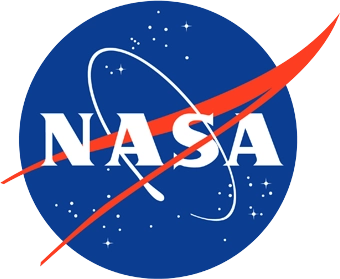Science News
Showing 1 to 24 of 505.
Inside the Visualization: Aerosols
2025.09.26
NASA uses satellites, ground measurements, and powerful computer models to track tiny particles floating in our air called aerosols. These small particles can travel thousands of miles, affecting the air we breathe and how far we can see, even far from where they originated.
NASA Aircraft Coordinate Science Flights to Measure Air Quality
2025.09.24
This summer, six planes collectively flew more than 400 hours over the mid-Atlantic United States with a goal of gathering data on a range of objectives, including air quality, forestry, and fire management.
B.C. Wildfires Send Smoke Skyward
2025.09.04
Lightning likely ignited several large fires that sent smoke pouring over the Canadian province in early September 2025.
Steve Platnick Steps Down from NASA After 34 Years of Service
2025.08.20
After more than three decades, at, or associated with, NASA, Dr. Steven "Steve" Platnick has completed his service to NASA Earth Sciences.
Smoke Blankets the Iberian Peninsula
2025.08.20
Fueled by extreme heat and dry conditions, intense wildfires in Spain and Portugal sent thick smoke across parts of Europe.
Widespread Smoke from Canadian Fires
2025.08.06
Fires burning in boreal forests created hazy skies across North America in summer 2025.
NASA-NOAA Satellites Show Smoke Complicates Wildfire Lightning Risk
2025.07.24
Heat rising from wildfires can create clouds that produce extreme amounts of lightning, but this doesn’t necessarily increase the risk of secondary fires.
Wildfire Smoke Billows Over Northern California
2025.07.17
Amid scorching heat and low humidity, the Green and Butler fires have burned tens of thousands of acres and choked nearby communities with smoke.
NASA Mission Monitoring Air Quality from Space Extended
2025.07.03
NASA’s Tropospheric Emissions: Monitoring of Pollution mission, or TEMPO, has been extended through at least September 2026.
Smoky Skies and Blooming Seas
2025.06.05
Smoke from wildland fires in Canada streamed over colorful seawater east of Greenland.
NASA's Curious Universe Earth Series: Monitoring the Air We Breathe
2025.05.06
Take a deep breath, and you’re inhaling oxygen from Earth’s atmosphere. Take a walk outside, and the atmosphere is shielding you from harmful radiation. NASA research provides crucial data to understand air quality and the intricate processes happening in the sky above us.
Dusty Days Are Here Again for El Paso
2025.04.29
Spring and early summer in the Chihuahuan Desert are dusty, but El Paso and the Borderplex region are experiencing one of their dustiest seasons since the 1930s Dust Bowl.
NASA Data Supports Everglades Restoration
2025.03.14
A new data product developed by NASA-funded researchers will help monitor from space the changing relationship between coastal wetlands and atmospheric carbon. It will deliver daily measurements of gaseous flux — the rate at which gas is exchanged between the planet’s surface and atmosphere.
Colorful Dust Over Mauritania
2025.03.03
Airborne dust is common over the West African country, but its source can affect the appearance of plumes.
Desert Dust Streams from Iran
2025.01.24
Winds lofted dust from the arid landscape across the Gulf of Oman.
Is Fire Activity Declining in Northwestern India?
2025.01.23
Satellites detected unusually low numbers of crop fires in Punjab and Haryana in 2024, and scientists are trying to understand why.
Annual Science Conference to Highlight NASA Research
2024.12.06
NASA researchers will present findings on Earth science, planetary science, and heliophysics at the upcoming American Geophysical Union (AGU) 2024 annual meeting in Washington, DC, beginning on Monday, Dec. 9.
The Earth Observer Editor’s Corner: Fall 2024
2024.11.14
On September 18, 2024, the National Oceanic and Atmospheric Administration (NOAA) shared the first images of the Western Hemisphere from the GOES-19 satellite, its newest geostationary satellite launched on June 25, 2024...
NASA’s BlueFlux Campaign Supports Blue Carbon Management in South Florida
2024.11.12
NASA’s BlueFlux Campaign, a three-year (2021–2024), $1.5-million project operating under the agency’s Carbon Monitoring System, used field, aircraft, and satellite data to study the impact of both natural and anthropogenic pressures on South Florida’s coastal ecology.
Smoky Skies Over the Indo-Gangetic Plain
2024.11.05
Annual fires contributed to hazy skies over northern Pakistan and India, causing schools in some areas to close.
NASA, NOAA Rank 2024 Ozone Hole as 7th-Smallest Since Recovery Began
2024.10.30
Healing continues in the atmosphere over the Antarctic: a hole that opens annually in the ozone layer over Earth’s southern pole was relatively small in 2024 compared to other years. Scientists with NASA and the National Oceanic and Atmospheric Administration (NOAA) project the ozone layer could fully recover by 2066.
NASA Goddard Hosts Former VP Al Gore to Mark 10 Years of DSCOVR Mission
2024.10.17
Environmentalist and former Vice President Al Gore visited NASA’s Goddard Space Flight Center in Greenbelt, Maryland, on Oct. 16, 2024, to commemorate the upcoming 10th anniversary of the DSCOVR (Deep Space Climate Observatory) mission.
Arctic Ozone Hits Record High
2024.09.26
An active atmosphere at northern latitudes contributed to the highest monthly Arctic ozone concentrations measured in the satellite era.
NCCS-Hosted Simulations Enable Exploring Prospects of Detecting Volcanic Signatures on ExoEarths
2024.09.26
The NASA Center for Climate Simulation enabled University of California, Riverside, and NASA Goddard Space Flight Center scientists to simulate large igneous province volcanic eruptions on Earth to define the atmosphere of a hypothetical Earth-like exoplanet (or exoEarth) for exploring the possibility of detecting volcanic signatures.
Showing 1 to 24 of 505.
